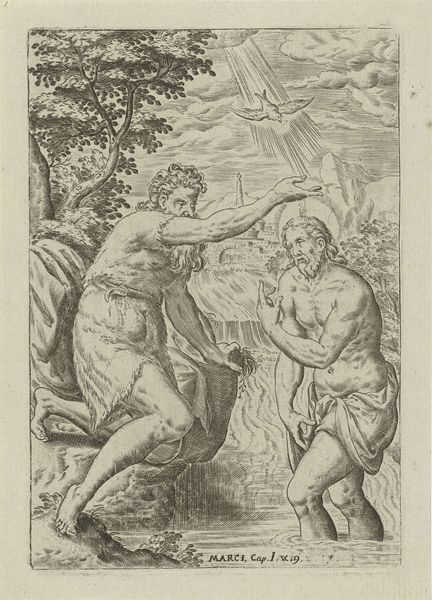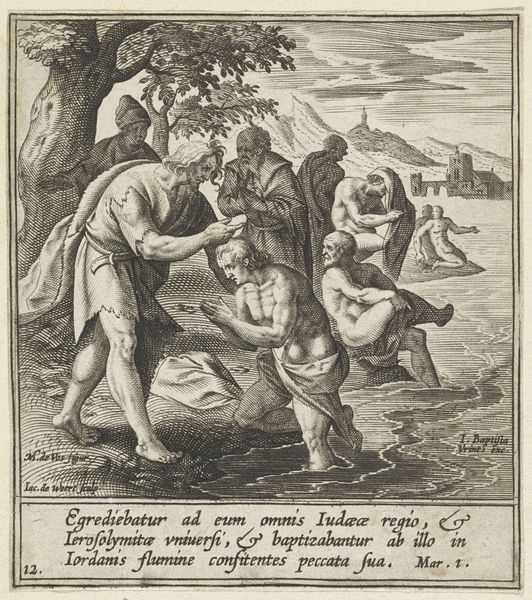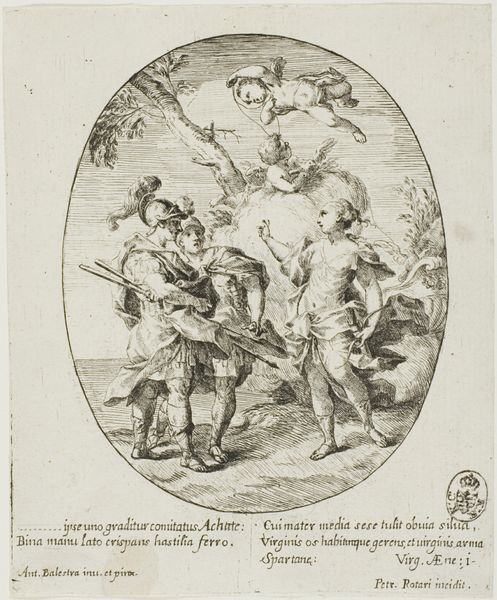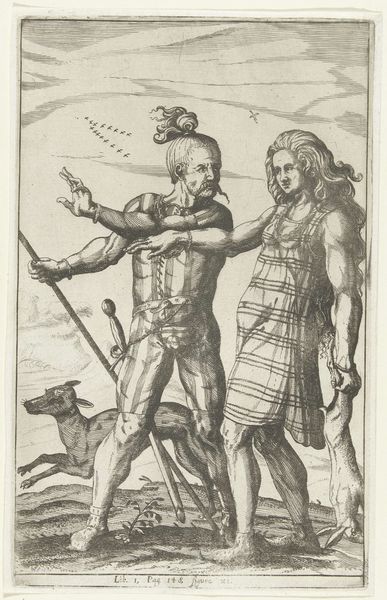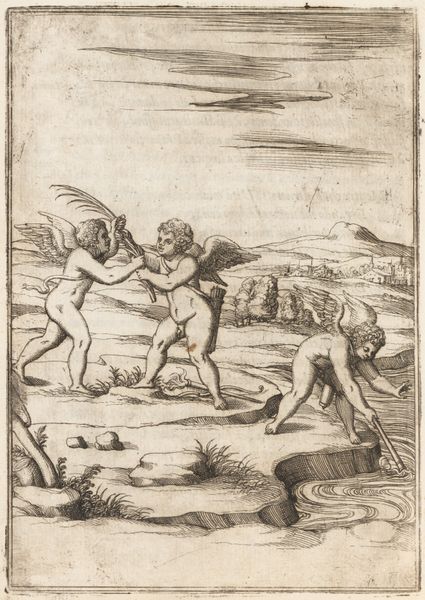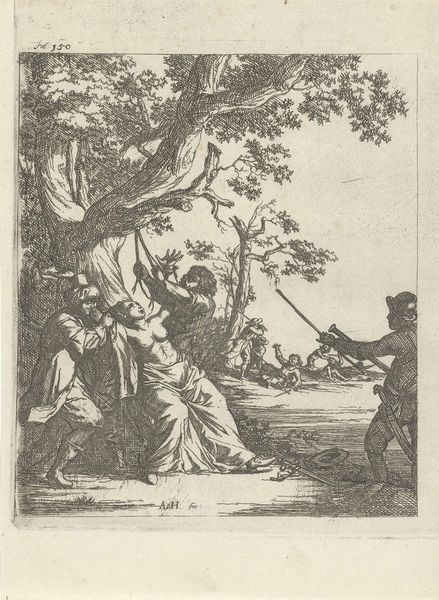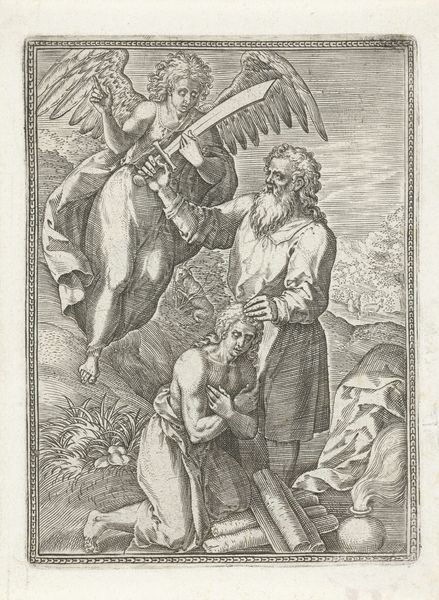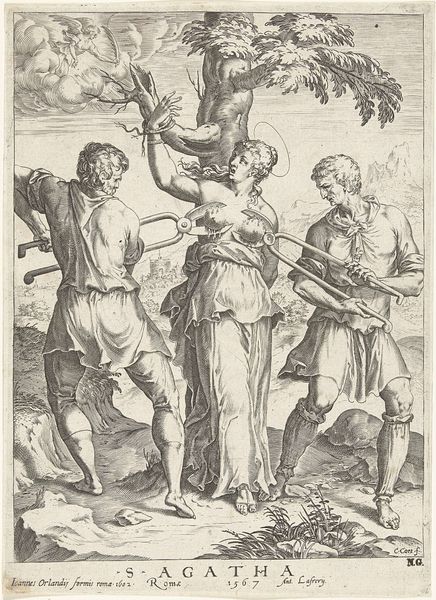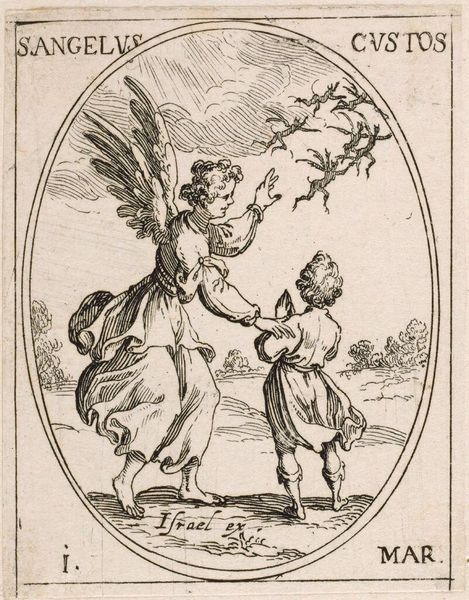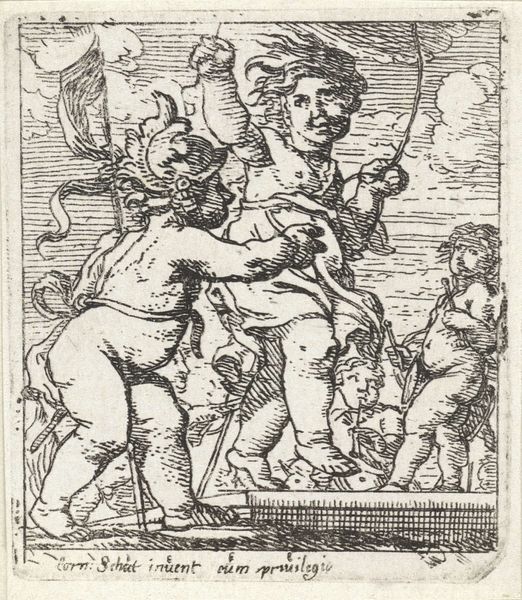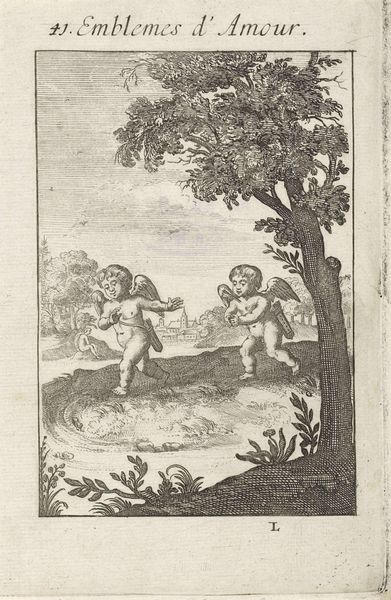
Vergeef ons onze schulden, zoals ook wij hebben vergeven wie ons iets schuldig was 1648
0:00
0:00
#
comic strip sketch
#
pen illustration
#
pen sketch
#
junji ito style
#
cartoon sketch
#
personal sketchbook
#
pen-ink sketch
#
sketchbook drawing
#
storyboard and sketchbook work
#
sketchbook art
Dimensions: height 101 mm, width 77 mm
Copyright: Rijks Museum: Open Domain
Curator: Albert Flamen created this pen illustration, titled "Forgive us our debts, as we also have forgiven our debtors", in 1648. Editor: It’s fascinating; I’m immediately struck by the contrast. The central figures almost clash with each other. And look at the two distinct backgrounds! There's that almost radiant angel in one part, and some violence in another. Curator: Yes, Flamen seems to be playing with juxtaposition. As a materialist, I see the economy of the line work. The printmaking process itself allowed for a relatively inexpensive distribution of a very loaded religious and social message. Consider the labour involved, multiplied across potentially thousands of prints. Editor: Absolutely, and we should also look at its social context. 1648 was a pivotal year – the end of the Thirty Years' War. This piece reflects, perhaps, on the need for forgiveness after such immense widespread conflict and material devastation. The wars fundamentally changed institutional powers at all levels of European society. Curator: You’re right to mention the printing technique, that’s an etching on paper. The texture really comes through. Editor: It is a beautifully intricate design for its relative simplicity. Those lines form dense areas of darkness but allow areas of almost pure light to stand out. Its public role would be quite powerful in that period; consider that literacy was not universal then; the image would provide accessible commentary about contemporary challenges. Curator: I'm drawn to how the artist renders human forms with very simple materials. Pen and ink elevated everyday, earthly struggles, like forgiving debtors, to an ethereal realm of winged angels and divine light. Editor: It makes one ponder how different communities throughout the region used prints like this, in contrast with painted works by court artists; perhaps they served very different ideological purposes at that time. Overall, it’s a work about balancing retribution with forgiveness, and earthly conflict with spiritual reconciliation. Curator: I agree. It really makes me reflect on the enduring power of the medium – even with humble means – to communicate such important lessons.
Comments
No comments
Be the first to comment and join the conversation on the ultimate creative platform.
